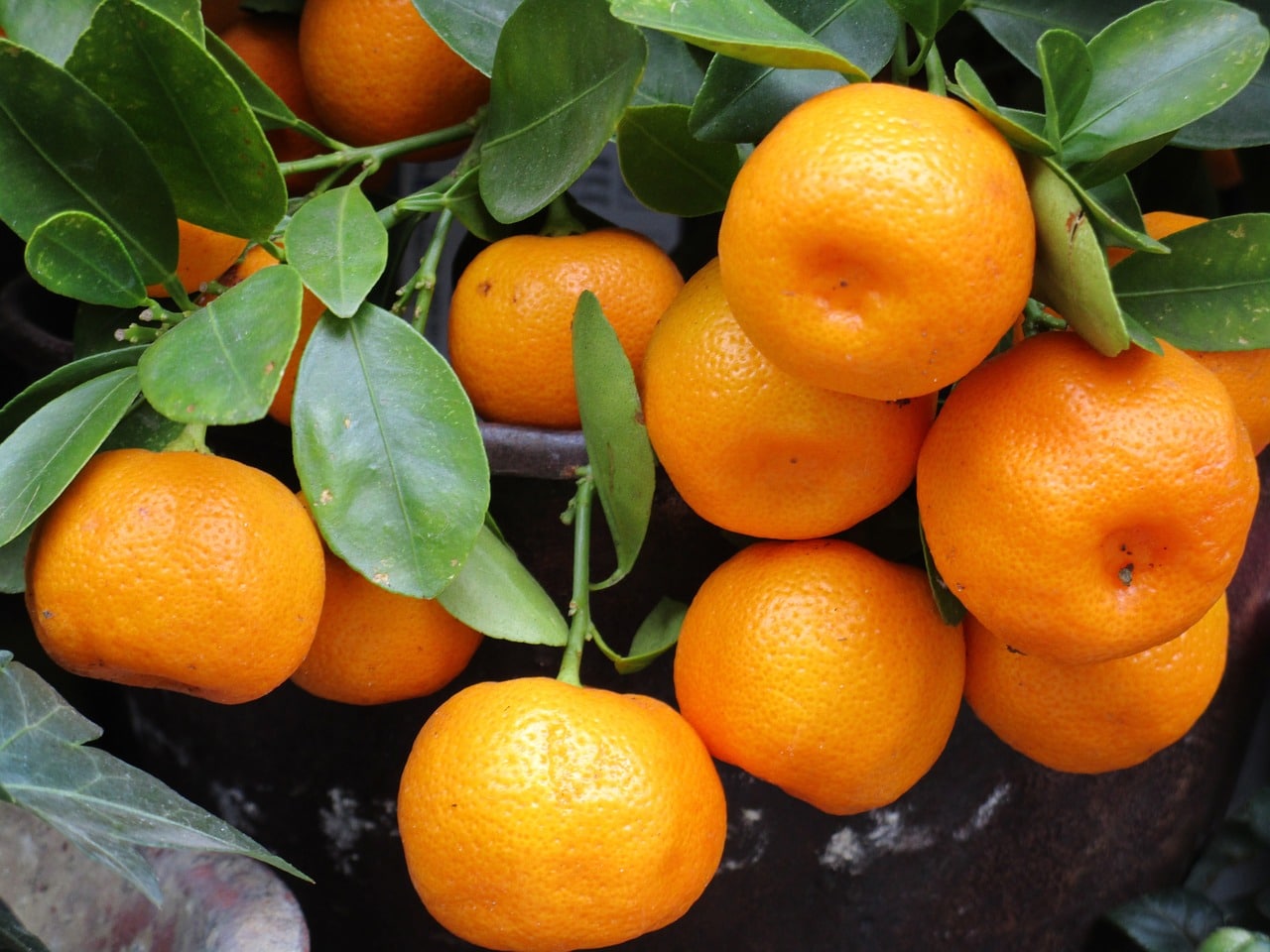The Community Plant Variety Office (CPVO), in Angers, France, is tasked to administer the EU system of plant variety protection. Since its creation in 1995, the office has received over 70,000 applications — of which it granted circa 55,000 — with over 28,000 titles still currently in force. This is the second article where European Seed sat down with the management of the CPVO. In the first we chatted with President Martin Ekvad, with whom we published the interview in April. We discussed some more controversial topics, currently on the plate of the CPVO, with its Vice-President, Francesco Mattina.
European Seed (ES): Francesco, the CPVO is involved in the EU INVITE project. Can you share some details on that project?
Francesco Mattina (FM): INVITE stands for INnovations in plant VarIety Testing in Europe and, up to a certain extent, iscomplementary to IMMODUS in the sense that it aims to make plant variety testing more efficient. INVITE is an R&D project funded by the EU Horizon 2020 programme. Its budget is about 8 million euros to be used in a period of five years starting in 2019.
INVITE’s first objective is to improve variety examination using innovative tools and methods, such as digital imaging techniques. It intends to maximize synergies between DUS and performance testing through relevant activities based on phenotyping, genotyping, modelling, and database management.
INVITE’s second objective is to inform stakeholders about the variety performances of the 10 crops which are being tested in the project (i.e. maize, wheat, rye grass, sunflower, potato, tomato, apple and three “application crops”: lucerne, soybean, rapeseed). These variety performances will be tested under different production conditions and on biotic and abiotic stresses.
The project is coordinated by the French research organisation INRA and involves CPVO and 28 other European partners. The consortium includes 11 members from CPVO’s network of entrusted examination offices.
The private breeding sector also benefits from a strong representation with the active participation of Euroseeds and two breeding companies NPZ and Bayer Crop Science, and also via the stakeholder platform and the Stakeholder Advisory Board (SAB) whose roles are to advise on the orientations of the project and support the dissemination of the project’s results.
[tweetshareinline tweet=”The private breeding sector also benefits from the INVITE project, through a strong representation with the active participation of Euroseeds and two breeding companies.” username=”cd19f3aaf40bae00d130d2e2087fa810″]
The Commission has financed a similar project called INNOVAR with 8 million euros for the same time frame. I am happy that the EU invests in the improvement of variety testing and I believe that there will be some tangible and useful results coming out from this project.
ES: The new EU Regulation 2018/848 (on organic production) provides for the marketing of Organic Heterogeneous Material and for organic varieties. Do you see a threat to the current way of carrying out DUS tests?
FM: In short, I do not see an immediate threat to the current way of carrying out Distinctness, Uniformity and Stability (DUS) tests. I believe that there is a strong demand from farmers to purchase high quality seeds tested by a neutral competent authority which can assure that the seeds comply with the current DUS criteria, as well as Value for Cultivation and Use (VCU). I do not foresee that the regulator would change this.
EU Regulation 2018/848 shall apply from 1 January 2021, and it does not replace or change the existing listing or plant variety protection system. It defines two different plant materials which should be promoted in organic agriculture: Organic Heterogeneous Material (OHM), which are not varieties, and Organic Bred Varieties (OBV).
Under this Regulation, OHM can be marketed by a simple notification and description provided by the breeder without testing if it complies with DUS and VCU standards. Seed certification is not mandatory, but the seed must comply with the Plant Health Regulation. It is not foreseen that such plant material could be protected, and the marketing of such material would not affect current DUS tests. However, an OHM is supposed to be designated by a denomination. This might impact the denomination testing of varieties as long as there is no requirement to fulfil the conditions established under Article 63 of Council Regulation 2100/94 on the suitability of denominations. OBVs can only be marketed if they comply with set DUS and VCU standards.
For the CPVO it is important to maintain the strength of the DUS testing system for plant variety rights. A variety that is protected must be described in a sufficiently precise manner in order to distinguish it from other varieties. However, uniformity standards could be reviewed. For both plant variety protection and listing purposes uniformity standards must be set. The UPOV Convention relates the uniformity standards to the way of propagation of a variety. We are starting to reflect on the matter with UPOV and examination offices on how to deal with the recognition of the OBVs and we participate in working groups organized by the Commission.
[tweetshareinline tweet=”For the CPVO it is important to maintain the strength of the DUS testing system for plant variety rights. Uniformity standards could be reviewed.” username=”cd19f3aaf40bae00d130d2e2087fa810″]
In order to develop a framework for the future commercialisation of OBV, a new temporary experiment is foreseen, that should start in 2021 and last for seven years. The CPVO is actively involved in the setup of that experiment consisting, for instance, in drafting adapted technical protocols for the testing of OBVs.
In this context, the CPVO is participating as a stakeholder in a European Project called LIVESEED whose objective is about boosting organic seed and plant breeding across Europe. We have exchanged with the European Consortium of Organic Plant Breeding (ECO-PB) to discuss the opportunities and challenges of registration of heterogeneous material and organic varieties. Moreover, the CPVO organized within the INVITE project in cooperation with FIBL, a stakeholder workshop in order to explore needs of organic breeders for variety testing of OBVs.
EU Regulation 2018/848 could of course lead to some unwanted results depending on how it is implemented. However, I do not see it as a threat. I believe that new times require new reflections and the CPVO is ready to find ways forward that contribute to the general good.
ES: With the UPOV 1991 Convention, the Essentially Derived Varieties (EDV) concept was introduced. Do you think this is a useful concept, and why?
FM: The introduction of the EDV concept in the UPOV 1991 Act was made in order to strengthen plant variety rights and I believe it was done for good reasons. This concept was introduced in the EU PVP system when Council Regulation 2100/94 was adopted subsequent to the UPOV 1991 Act. Nowadays, looking at the evolution of the breeding sector, the EDV concept is highly topical. It should create a balance between biotechnology inventors and traditional breeders and also ensure an appropriate balance between the scope of the right and the exemptions, in particular the breeders’ exemption.
The idea of just introducing a new gene in a protected variety or to use freely any mutant would indeed weaken the right granted to the initial variety. This would result in discouraging innovation in a sector where investments to create new and better varieties are crucial.
The attempt to define exactly or at least clarify the concept of EDV has however caused headaches amongst policy makers, scholars and the industry. I will not enter into that discussion here. I would instead express why I think the EDV concept is nevertheless useful.
Under the EU PVP legislation, it is not up to the CPVO to decide if a variety is an EDV or not. It is up to the breeders to work out any differences of opinion and if there is not an agreement, the competent court will decide. This has triggered industry to come up with protocols and arbitration tools to assist in resolving conflicts. Even without such tools, it is often clear to breeders when a variety is essentially derived. In contacts with the industry, I have learnt that the mere fact that the provision on EDVs exists, is to the benefit of holders of CPVRs in discussions with potential infringers. Accordingly, it is a useful concept.
Having said this, it would of course be even better if more clarity would be offered as to what is and what is not an EDV. In October 2019 it was decided to continue discussions in UPOV on the UPOV Explanatory Note on EDVs. I hope that this work will contribute to clarify the concept.
ES: There’s been much discussion about plant breeding innovation. Do you think the arrival of these new breeding techniques might have an impact on plant breeders’ rights and perhaps its enforcement?
FM: New breeding techniques, and especially gene editing, are very promising tools for breeders that could be used to accelerate breeding schemes and create new assortment of favourable alleles in elite lines. Taking this into account, it is very important that the regulatory framework in the EU is anchored to science and that it is not fear based. The EU Commission has been tasked by the Council to analyse the situation. Despite the political challenges involved, I hope that a workable solution is found which will allow the EU to continue being in the forefront of innovation whilst respecting health standards.
[tweetshareinline tweet=”It is very important that the regulatory framework in the EU is anchored to science and that it is not fear based.” username=”cd19f3aaf40bae00d130d2e2087fa810″]
As for the EU PVP system, there will be some challenges taking into account that it is not fully clear which techniques fall within the GM definition and bearing in mind that the use of such techniques can be difficult to detect. If a variety is considered to be a GMO (old or new breeding techniques used) the applicant must provide the so-called Part B of their authorization of release in the environment so that the CPVO may organise the DUS trial.
In some cases, the genetic modifications borne by these varieties will be undistinguishable from natural mutations and thus undetectable without declaration. Therefore, the loyalty of the applicants to make the necessary declaration will be even more critical for the CPVO to ensure compliance with European Union law.
In terms of DUS procedure, new breeding techniques (NBT) should not change the way varieties are tested. As for any variety, CPVO protocols will continue to apply.
If not distinct from the varieties of common knowledge based on characteristics derived from NBT and if the applicant requests it, additional characteristics deriving from the edited genes could be used to establish distinctness provided that they fulfil all UPOV requirements.
Regarding enforcement, if all the conditions for the granting of a CPVR are fulfilled, a variety produced using NBT will receive a title that should not pose more difficulties to enforce than one granted to a non-biotech variety or a variety produced by “conventional” transgenesis.
ES: The recent decision of the Court of Justice of the European Union (CJEU) in the case C-176/18 (‘Nadorcott’), renders the provisional protection less strong than previously thought. What is your take on this verdict?
FM: The judgment of the Court of Justice of the European Union certainly represents a pivotal case in the interpretation of the scope and the limits of the exclusive rights granted to the owner of a protected variety.
As regards the provisional protection, in essence by its third question, the referring court asked the CJEU whether Article 13(3) of Regulation No 2100/94 must be interpreted as meaning that the fruit of a plant variety, which is not liable to be used as propagating material, is to be regarded as having been obtained through the ‘unauthorised use of variety constituents’ of that plant variety, where those variety constituents were propagated and sold to a farmer by a nursery in the period between the publication of the application for CPVR protection and the date of grant of that protection.
In its reply to the question, the CJEU made a clear distinction between the protection regime attributed by a CPVR as from the date of grant and the provisional protection regime that extends to the period between the date of publication of a CPVR application and the date of grant (the “provisional protection period”). Until the grant of the CPVR, there is no obligation of prior authorisation from the CPVR applicant. As a consequence, acts of propagation and sale of trees by the nursery to a farmer that were effected during the provisional protection period cannot be regarded as unauthorised use. Accordingly, fruit harvested from those trees cannot be regarded as having been obtained through unauthorised use, even if harvested after the grant of the CPVR.
As a consequence, the breeder’s choice to start marketing the trees of an applied-for variety already during the provisional protection period, open up the risk that the growing for the purpose of harvesting does not qualify as unauthorized use. Therefore, the breeder will, during the provisional protection period, only be entitled to an equitable remuneration for those acts that would have required his authorization after the grant of the right. It stems from the foregoing that the intention of the legislator was to differentiate the protection regime applicable during the provisional protection period from the authorization regime that starts from the date of granting of the CPVR. The right to claim damages’ compensation is a consequence to the existence of a CPVR as an object of property and of the regime of prior authorization.
On the other side, the equitable remuneration fulfils the function of granting a pecuniary recognition whose purpose is to repay, even if only partially, the investment made by the breeder. Therefore, I would not conclude that the judgment of the CJEU makes the provisional protection regime weaker than previously thought.
However, the interpretation of the provisional protection regime might lead to the negotiation of new contractual arrangements between breeders and users interested in starting the exploitation of new varieties. Secondly, breeders may need to enter into more stringent agreements when deciding whether to start commercialising their varieties during the provisional protection period, in order not to delay the marketing of new varieties until after the grant of the CPVR title, and considering that the average duration of a DUS testing of fruit trees may be four years from the delivery of the plant material to be submitted for technical examination.
Finally, the fact that the provisional protection regime is not as strong as the right once it is granted, represents and will continue to present a deterrent for those who have an interest in starting the exploitation of a new variety.
Good contractual models and resorting to contractual liability could certainly play in the breeders’ favour.
[tweetshareinline tweet=”Breeders may need to enter into more stringent agreements when deciding whether to start commercializing their varieties during the provisional protection period.” username=”cd19f3aaf40bae00d130d2e2087fa810″]
ES: In Oct 2019, the CJEU ruled that the holder of a CPVR cannot request information from an official body on the use of a species, without defining the specific protected variety. Does this endanger Europe’s system for Farm-Saved Seed?
FM: The entitlement of CPVR right holders to acquire information about the use of farm-saved seeds of protected varieties is of fundamental importance for the enforcement of their rights. The titleholders have exclusive responsibility to monitor compliance with the European Union Law on the agricultural exemption. The CJEU has dealt with the interpretation of the right of information in several leading cases in preliminary rulings from German courts. The first cases concerned the collection of information of CPVR titleholders on the use of farm-saved seeds from farmers, then from seed cleaners and finally from official bodies. In those previous cases, the CJEU had already clarified that the right of titleholders to request information on farm-saved seed is conditional upon having some indication of use or intended use of the harvested product of a protected variety. In the last case, the CJEU concluded that the titleholder shall exercise the right to information referring to specific protected varieties and cannot generically refer to the plant species. In doing so, the CJEU confirmed that the basis for the exercise of the right to information refers to protected varieties as it is in relation to the latter that said right could be exercised.
It seems to transpire from the judgment at stake that broadening the scope of the right of information to species, could risk of impairing the delicate balance of apparently opposed interests among the parties concerned.
However, the paradigm of the system that justify titleholders’ access to information should facilitate transparency to the benefit of both farmers and the breeders. Ultimately, farmers have the right to access better varieties that suit better under different climatic and growing conditions. In order to secure said access, incentives to breeding new varieties shall be recognised by allowing the use of farm-saved seeds against the payment of an equitable remuneration.
While the responsibility to monitor compliance with the applicable legislation on the agricultural exemption lies with the titleholders, access to information remains a key right to guarantee effective enforcement of the right to an equitable remuneration.
A better way to reconcile the aforementioned apparently opposed interest would be by the negotiation of specific agreements between the parties at stake with a view to safeguard transparency and a fair access to information. This would lead to a more equitable remuneration for titleholders, on the one side, and to greater access to better varieties for farmers, on the other side.
Editor’s Note: This is part 2 of Celebrating 25 Years CPVO. Part 1 can be found here











